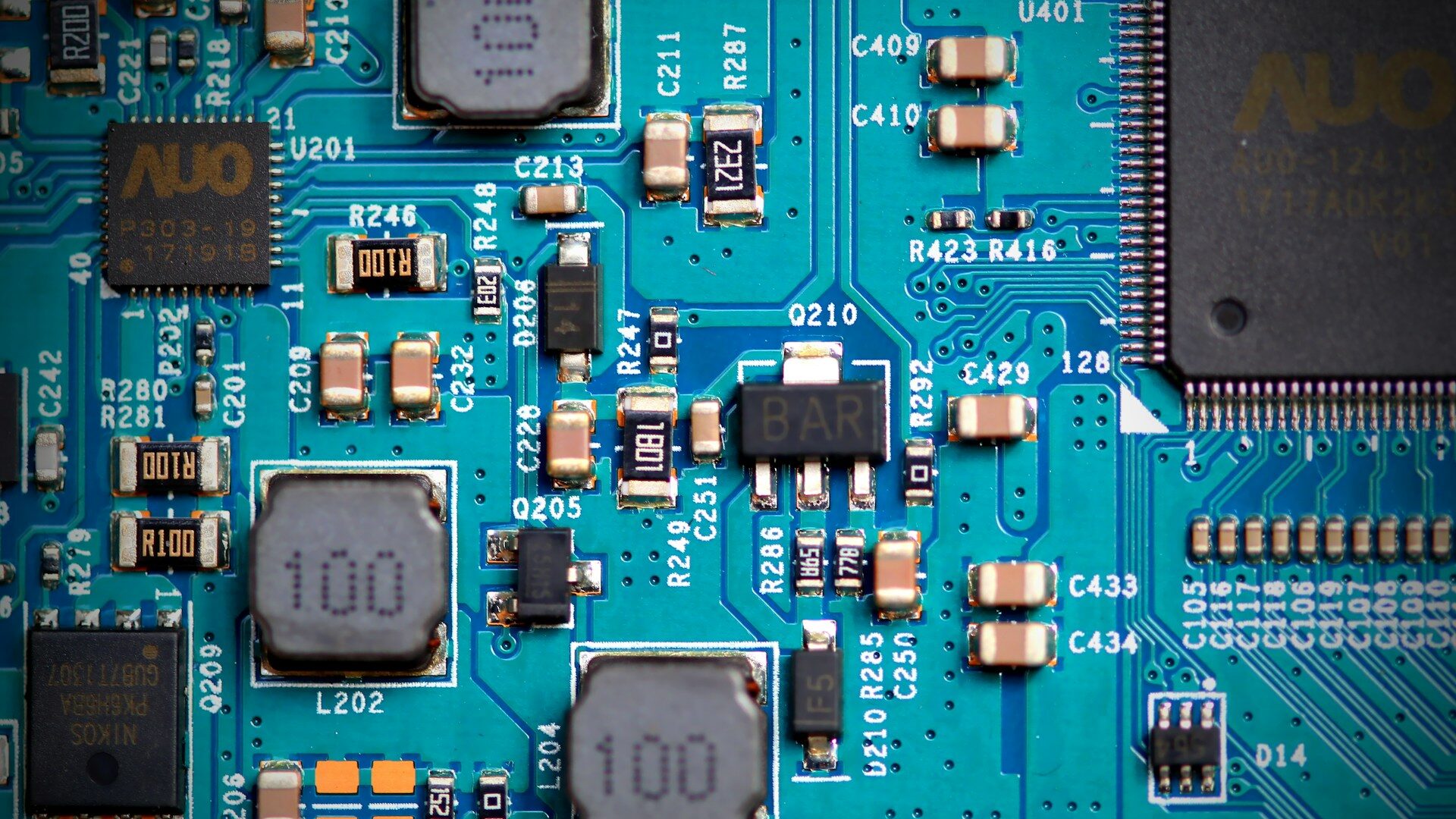
Reasons the Semiconductor Supply Chain Needs More Security
December 14, 2020 - Emily Newton
Revolutionized is reader-supported. When you buy through links on our site, we may earn an affiliate commission. Learn more here.
Products ranging from smartphones to medical equipment contain semiconductors. Many people underestimate the importance of these components. Still, they would arguably think differently if a sudden and prolonged shortage of items containing them occurred due to problems with the semiconductor supply chain.
Unfortunately, that possibility is not far-fetched and has already happened to some degree. Here are some of the factors that affect supply chain security and how to improve the associated weaknesses.
Tensions Associated With a China-United States Trade War
A Deloitte report mentioned that 2019 would be a difficult year for the technology sectors in China and the United States. The document’s authors also predicted that semiconductors would represent the hardest-hit sector since the United States imports $2.5 billion worth of goods from China annually. The tensions persisted throughout 2020, and the instability of the situation continues to cause supply chain difficulties.
In early September 2020, the Trump administration announced it might impose special export restrictions on Semiconductor Manufacturing International Corp., China’s largest semiconductor manufacturer. That news prompted a 2,400-member industry group to draft a letter to Secretary of Commerce Wilbur Ross to clarify how such a decision would hurt the United States’ tech industry.
Some manufacturers in the United States make semiconductors. However, major companies like Apple and NVIDIA rely on makers in Asia, a hotbed of semiconductor creation.
One possibility for some U.S. companies is to move production out of China but continue doing business elsewhere in Asia. Brent Christensen, director of the American Institute in Taiwan, recently spoke at a conference in Taipei, where he urged democracies with shared values to work together on supply chain security by becoming more reliant on countries other than China.
That’s a viable option, but the goal will take a substantial amount of time to achieve. Moreover, not all Western brands are on board with the idea. Although most agree it’s time to make their supply chains more secure, they don’t necessarily think the solution is to move outside of China altogether. Only time will tell how this situation will pan out. For now, it’s evident tensions are on the rise and could soon reach a boiling point.
Semiconductor Supply Chain Issues Linked to Shorter Product Cycles
Product lifecycles have gotten progressively shorter over the years. That reality raises issues related to the security of the semiconductor supply chain. If manufacturers have difficulties sourcing the required parts, they may resort to doing business with providers that have not yet earned their trust. It’s then more likely that counterfeit materials could enter the supply chain.
Relatedly, as manufacturers scramble to meet marketplace demands, security often becomes an afterthought and sometimes is scarcely considered at all during the making of a new product. The primary goal is to get items to consumers within tight timeframes and do that before competitors can. Companies may do what they can to ensure no major cybersecurity flaws exist, but they often don’t prioritize making the hardware safe from the start.
Sources report that counterfeit semiconductors create problems costing billions and that the scope could be more significant than thought since it’s a largely underreported issue. Researchers at Massachusetts Institute of Technology may have developed a solution via a millimeter-sized cryptographic identification tag. It features a tiny chip to store and transmit information. Although the team called it the “tag of everything,” it believes the semiconductor industry could especially benefit from it.
Other researchers propose thwarting fake parts with the blockchain. One possible framework specific to the electronics supply chain stops several kinds of counterfeiting, including remarking and cloning. The team could tweak it to prevent emerging counterfeit attempts, making it particularly valuable.
Besides curbing counterfeiting, manufacturers must adjust their viewpoints and understand the security issues associated with hardware. Combatting those may mean incorporating new cybersecurity standards into the supply chain or abiding by government regulations that require that to happen. Diversifying the supply chain strengthens resources, but it can also increase cybersecurity and reduce malicious parties’ interference.
A Lack of Preparedness for Supply Chain Shocks
Another factor affecting supply chain security is the lack of preparedness for catastrophic events, such as the coronavirus pandemic’s recent impacts. As previously mentioned, many brands depend on Chinese supply chain partners, and the novel coronavirus emerged in China first. It did not take long for companies worldwide to notice the effects of lockdowns and manufacturer shutdowns.
A look at the top 1,000 companies and their supply chain partners showed 3,238 associated with high-tech products, semiconductors and consumer electronics in China affected by COVID-19 lockdowns and quarantines. Such a geographical concentration in the supply chain makes companies less able to respond when emergencies threaten their resources.
As early as February, Flex, an electronics component manufacturer in Singapore, began to experience adverse effects. The company had item shortages totaling five times greater than a typical day — equaling approximately 8,000 items.
However, that company is one of the few examples of a success story. Within weeks, the business leaned heavily on digitization, including virtual reality and a touch-sensitive panel that tracked component locations.
Many people describe the novel coronavirus as something they never saw coming and could not have imagined. That’s understandable to an extent, but a sizable part of running a successful supply chain requires planning for the unthinkable. Manufacturers should treat the pandemic as a crucial wakeup call. Even those that adapted to the challenge relatively well should realize that the next tremendous disruption could be just around the corner.
The U. S. Is Not a Dominant Force in the Semiconductor Industry
The COVID-19-related difficulties connect to a related issue explored earlier, whereby the United States depends too heavily on other nations for its semiconductor manufacturing needs. If more semiconductors came from factories in the United States, companies could enjoy more resiliency. Shipping delays may still occur during future disasters, but businesses would likely have more flexibility in reducing their sourcing challenges.
The United States accounts for only about 12% of the world’s semiconductor manufacturing. Policymakers see this as a national security risk, and they recognize that making more investments to boost the nation’s semiconductor output would strengthen supply chains, too.
One short-term solution for helping the U.S. gain ground could be to focus more on building automated factories. Embracing smart fabrication brings several benefits, including better yields and more flexibility. Some analysts view automation in semiconductor manufacturing as essential rather than optional, especially as markets become extremely competitive. Companies that cannot keep up risk falling short and losing out on potential profits.
It could take decades for the United States to catch up with the more prominent players in the semiconductor sector. That extended timeframe presents an opportunity for foreign manufacturers to create bases in the country. Taiwan Semiconductor Manufacturing Co. (TSMC) recently announced plans to do that by coming to Arizona. The move would give the company easy access to the state’s bustling tech sector and potential new customers.
The enterprise reportedly manufactures more than 10,000 individual products for nearly 500 clients. Bringing operations to the United States could provide more supply chain security by putting the manufactured parts closer to the American companies that buy them. Moreover, businesses thinking about choosing TSMC as a supply chain partner might be more eager to do that if there’s a factory in the United States.
No Simple or Quick Solution
This overview illustrates why strengthening the semiconductor supply chain does not involve a clear path to an easily implemented solution. Instead, company representatives must think seriously about the most severe issues they face and how to conquer them.
They must also grasp that succeeding will likely not happen alone. Collaboration may happen by working with a technology partner on a solution to stop counterfeit parts or discussing needs with a supply chain provider that could help diversify a business’s resources.
Emphasizing the supply chain’s security may seem daunting. However, making improvements could help a semiconductor manufacturer remain profitable and less affected by expected difficulties and ones that come as surprises.
Revolutionized is reader-supported. When you buy through links on our site, we may earn an affiliate commission. Learn more here.
Author
Emily Newton
Emily Newton is a technology and industrial journalist and the Editor in Chief of Revolutionized. She manages the sites publishing schedule, SEO optimization and content strategy. Emily enjoys writing and researching articles about how technology is changing every industry. When she isn't working, Emily enjoys playing video games or curling up with a good book.






